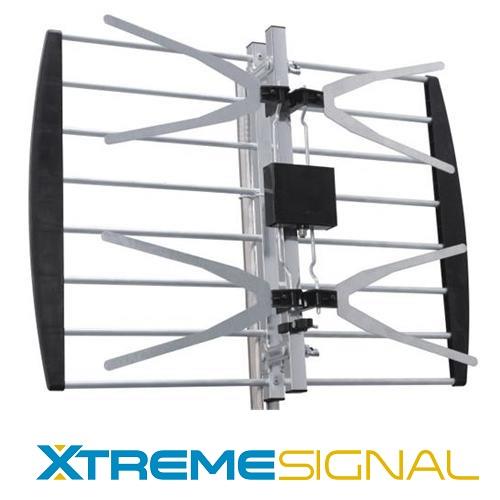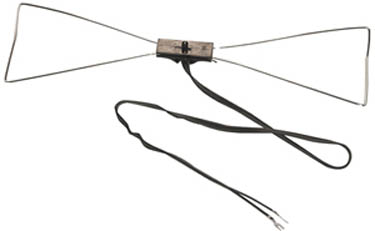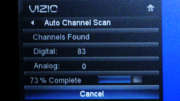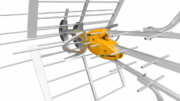You remember these, right? The clip-on bowtie antenna was once a staple of television watching. It attached to your VHF “rabbit ears” and gave you decent UHF antennas.
What is a bowtie antenna?
I wrote way too much about the bowtie antenna in this article, but it’s still worth going through the basics. A bowtie antenna is one of the earliest examples of a “folded dipole” design. It was discovered early in the last century that the higher the frequency, the smaller the antenna needed to be. One of the perfect designs for UHF frequencies (and therefore, most television watching,) is an X. The antenna elements don’t interfere with each other because of the angle, and the two elements work together to pull in a lot of signal.
You can see the X-shaped antenna element still in use today in one of our most popular antennas:

While there is a lot more going on with this antenna, it’s essentially two folded dipoles, one on top of each other.
The X-shape worked great but it wasn’t very strong. Back in the 20th century people played around with their antennas a lot to get better reception. This had to do with the reasonably simple design of the antenna and the low quality of the materials used. They just weren’t as good as they are today. So, in order to keep the antenna from getting too banged up, a connecting piece of metal was added on the edges of the “X,” leading to the classic bowtie shape known today.
Some were pretty fancy

This early model was pretty much the same idea as our HDB2X, but the brass-colored elements and decorative musical motif on the reflector set it in a much more mid-century style. It probably didn’t work as well as an HDB2X but it sure looked good, if that was your sort of thing.
But will it still work?
If you happen to have one of those old Radio Shack bowtie antennas — and they were everywhere until about the 1990s — it will work great. You’d need a balun in order to connect it to a modern TV since no TV has those screw terminals anymore. But once you did you’d probably find it worked pretty well. Perhaps not as well as a modern antenna but still, it would work.
It would work because it doesn’t matter if a signal is analog or digital, ancient or modern, an antenna still picks it up. The technology is still the same and the physics haven’t changed.
Of course just because it will give you some signal doesn’t mean it’s perfect for you. You’ll probably get much better results with a modern indoor antenna from Solid Signal. Not only that you’ll find that it looks better too. I mean, there’s nothing wrong with that steel bowtie but it’s not going to win any design awards in the 21st century, right?
If you’re not sure which antenna to buy, get a free, no-obligation recommendation from Solid Signal!





